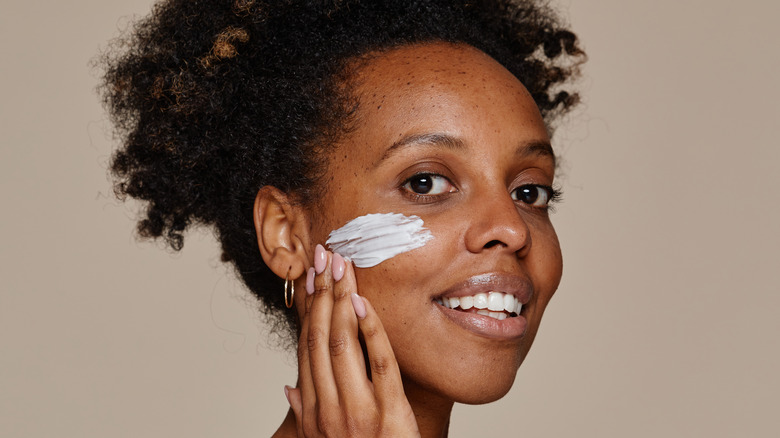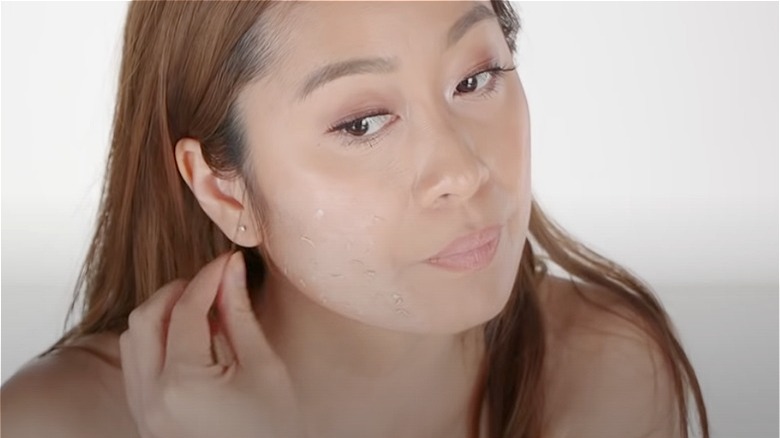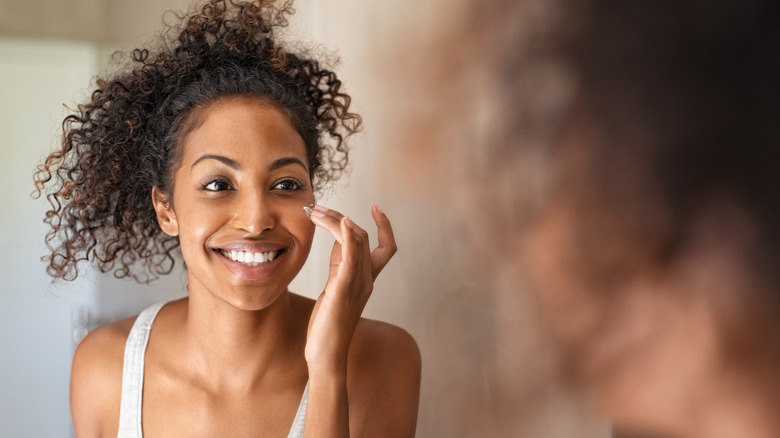Why Your Skincare Is Pilling (And How To Prevent It)
Skincare can seem like a mysterious realm of do's and don'ts, especially with the constant barrage of celebrity endorsements and TikTok how-tos dominating our feeds. When it comes to your routine, understand that what works for someone else might not work for you (and vice versa). Though Jennifer Lopez swears by olive oil (according to Vogue Beauty Secrets), that doesn't mean swabbing your face with it will benefit your acne-prone skin. Though benzoyl peroxide may calm some breakouts, it can be overly drying on others.
Remember that skin goes through a series of transitional periods throughout our lives — you might have a dry skin type at one stage, and combination at another. This is largely due to changing hormones, diet, and increased stress levels. Regardless, several things are universal: first, never skip the sunscreen — yes, even in the wintertime. Next, you've probably experienced some form of product pilling throughout the course of your cosmetic journey. So, what causes these glob-like balls of product, and how can you learn to prevent them in the future?
Take your time between layers
At its worst, pilling can make it look like you're shedding a layer of skin. "When layering skincare or makeup products, or when product textures do not agree with each other, you may experience pilling," aesthetic practitioner Alexandria Henderson explains to Who What Wear, clarifying, "This is when you can see the product appearing on the skin or on your hands in little bobbles." First and foremost, you might be using too much of your favorite products. Overwhelming your face with moisturizer and foundation will make it hard for your skin to fully absorb each. When it comes to foundation especially, focus on light layers. It's also important to allow each product time dry before going in with the next — if you're really in a hurry, turn your hair dryer to the lowest setting and use it to speed up the process.
The order in which you apply each ingredient could also have something to do with pilling. For starters, don't begin your routine with oil-based solutions. Instead, start with your thinnest product and work your way up. Typically, that means applying serums before moving on to moisturizer. As a general rule, less is more. The simplest routines are usually the most effective. Finally, finish off your skincare with sunscreen, giving it plenty of time to soak in before adding makeup.
Your favorite products might be the issue
Oil and water are notorious nemeses. In that vein, try not to layer your water-based skincare like gel creams with heavy helpings of silicone-based primers and sunscreens. Specifically, look out for labels that list dimethicone as a main ingredient — though it creates a smooth finish and can feel luxurious on the skin, it's often the culprit when it comes to pilling. "Silicone-based products are not absorbed by the skin, therefore if a product contains silicone it could ball up." Dr. Norman Rowe, MD, a board-certified plastic surgeon, explains to Bustle. However, if you're committed to using silicone in your skincare routine, make sure it's your final step and that you use it conservatively.
Also of note, incorporating a gentle exfoliant into your routine can increase your skin's ability to absorb ingredients. Though you should avoid exfoliating every day, applying an overnight exfoliant two to three times a week can do wonders when it comes to pilling.


